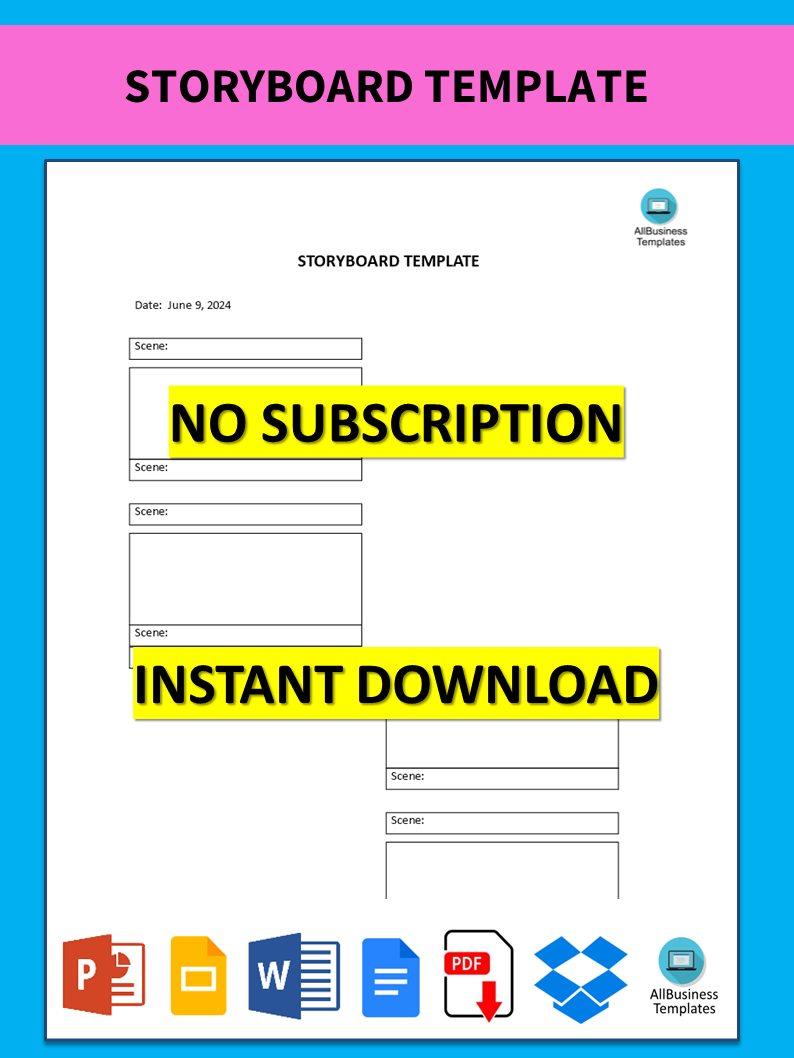Storyboard Template
Sponsored Link免费模板 保存,填空,打印,三步搞定!

Download Storyboard Template
微软的词 (.docx)免费文件转换
- 本文档已通过专业认证
- 100%可定制
- 这是一个数字下载 (64.88 kB)
- 语: English
Sponsored Link
How do you write a storyboard? Are you looking for a template for a storyboard? Have a look at this sample storyboard template. It's a great way to plan out your story and make sure all the elements are in the right place. It's also a great way to keep track of progress and make sure that nothing gets left out.
A storyboard template for films, television shows, animations, advertisements, and other visual media is a visual tool used in the planning and production process. Before actual production starts, it helps the creators arrange and visualize the order of scenes, shots, and key moments. The typical storyboard contains a series of frames or panels representing each shot with accompanying notes and descriptions.
Critical components of a storyboard template:
- Frames/Panels: These are empty boxes with sketches or images of each shot drawn on them.
- Scene/Shot Numbers: Each frame or panel in the storyboard is numbered to indicate its position relative to the other scenes or shots in the film.
- Action Description: This is a brief outline of what happens during the shot.
- Dialogue: This may consist of anything said during the hijack including voiceover text that comes with it.
- Camera Directions: Notes on how supposed camera angles are supposed to be, movement directions and shots types at play in that particular sequence could also form this aspect as such.
- Timing: States how long you would spend in one scene or shot regardless of whether at once or separately considered as scenes/sub-scenes respectively.
- Additional Notes: Depending on our interests may include further details like sounds effects music etc.
Storyboard templates play an important role by helping to achieve the following:
- Visual Planning: Before filming or animating, it allows creators to visualize the sequence of events, angles of the camera, or transitions to make sure that the narrative flows smoothly.
- Communication Tool: It helps directors, cinematographers, and the production team understand the vision behind everything they produce together with how things will come out.
- Efficiency: Planning shots reduces time and resources spent in production since everyone knows what is required.
- Problem-Solving: It can identify possible issues regarding sequences or shot compositions early enough to make adjustments before actually producing something.
- Consistency: Ensures all team members are on the same page concerning visual style and narration thereby maintaining consistency all through projects.
- Film and television: About shot composition, camera movement, and transferring from one scene to another;
- Animation: Incorporates comprehensive action descriptions as well as timing for every single frame mostly reliant on character emotions and movements;
- Advertising: It has an emphasis on prominent visuals (which are the main aspects) and message sending. Minimal brand interference is tolerated here.
- Interactive media/games: It covers user interactions using screen transitions while also taking into account interface components.
To tell a story visually, all the necessary elements must come together; thus, it is important to use a storyboarding model to plan and carry out a current visual project.
To improve efficiency, download our storyboard template immediately in Word format or type "Open in Google Docs" directly!
DISCLAIMER
Nothing on this site shall be considered legal advice and no attorney-client relationship is established.
发表评论。 如果您有任何问题或意见,请随时在下面发布
相关文件
Sponsored Link


